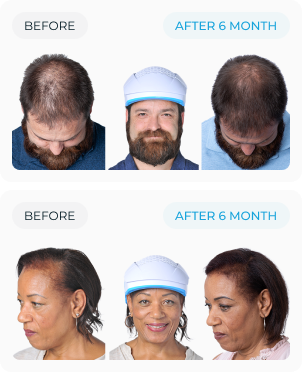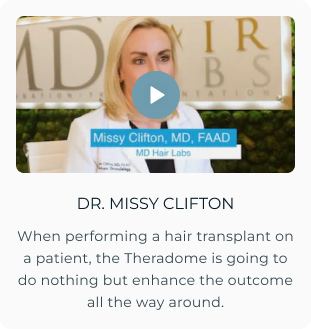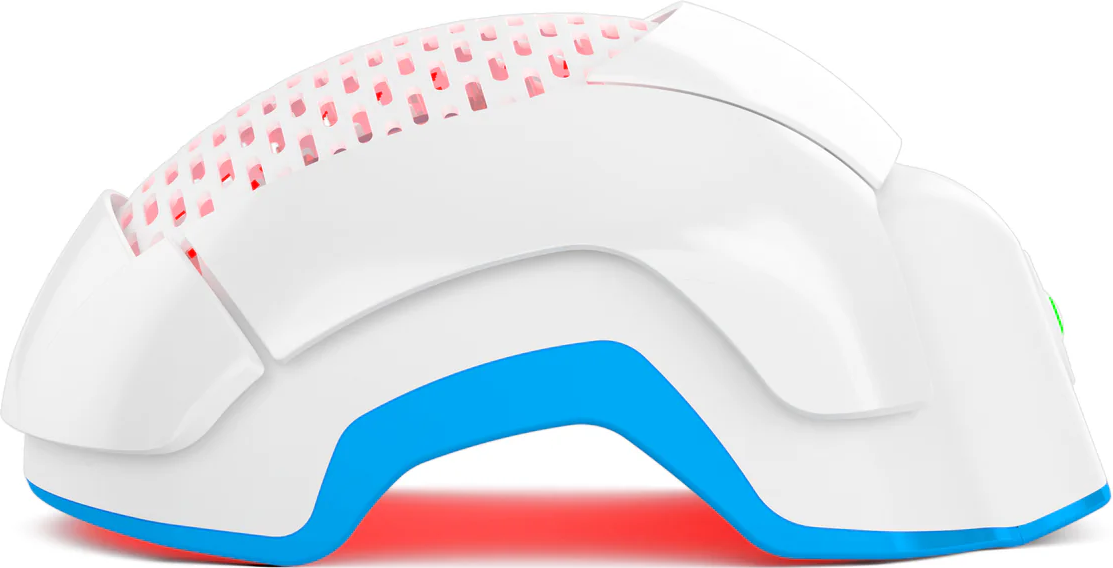Let’s get one thing straight—split ends are a universal annoyance. You’ve probably heard them blamed for everything from dull hair to stunted hair growth. But do split ends stop hair growth?
Not really.
Your hair grows from the roots, not the ends, so those pesky splits at the tips don’t control what’s happening at the scalp. But don’t breathe easy just yet. While split ends won’t hit pause on your hair growth, they can make it seem like your hair has hit a wall.
How? By breaking off before you ever get the chance to show off those extra inches.
So, if you’re serious about keeping your hair healthy and growing, ignoring split ends isn’t exactly a winning strategy. The trick isn’t to stress about every little fray, but to understand how split ends can create the illusion of no growth and, most importantly, how to prevent them from getting in the way of your hair goals.
What Are Split Ends?
Split ends, also known as trichoptilosis, are one of those inevitable hair woes that can creep up on anyone. They happen when the protective outer layer of your hair, the cuticle, wears down, leaving the inner layers exposed and vulnerable. This leads to the hair shaft fraying or “splitting” at the ends. And split ends don’t play favorites—whether your hair is straight, curly, or somewhere in between, they’ll show up whenever your hair is weak.
Now, what exactly causes split ends to rear their ugly heads?
Everything from heat styling and chemical treatments to rough brushing and environmental stressors like sun exposure can chip away at your hair’s defenses. And if your hair is dry, damaged, or processed, you’re even more likely to experience these pesky splits. Look, those frequent blow-drying sessions or aggressive comb-throughs aren’t doing your strands any favors.
Do Split Ends Stop Hair Growth?
No, split ends don’t stop hair from growing. Hair grows from the follicles in your scalp, not the ends, so the growth process isn’t affected by whatever fraying is happening further down the shaft. On average, your hair grows around half an inch per month, or about 6 inches per year, no matter what’s happening to the tips. However, split ends do make it harder for your hair to stay long. When ends split, they become weak and prone to breaking off, which means your hair loses length faster than it can grow.
But—and this is a big but—split ends can give you the impression that your hair isn’t growing. How? Well, here’s where the effects of split ends on hair health come into play. Split ends cause breakage, which can make your hair snap off faster than it can grow. Essentially, it’s like filling a bucket with water that has a hole at the bottom. The hair might technically be growing, but since it’s constantly breaking at the ends, it looks like you’re stuck in a no-growth rut.
Split ends are the ultimate sabotage. They weaken the hair shaft, leading to further damage and shorter hair. Over time, the breakage can travel up the hair, causing more strands to snap off, which leaves your hair looking shorter, thinner, and less healthy than it actually is.
So, while split ends aren’t stopping growth at the root, they’re absolutely keeping your hair from achieving its full length potential. If you want long, healthy hair, split ends need to be trimmed regularly to avoid this ongoing cycle of hair breakage and frustration.
Impact of Split Ends on Hair Health
Split ends may seem like a minor annoyance, but they’re much more than just an aesthetic issue. When the ends of your hair begin to fray, it’s a clear sign that your hair is damaged and vulnerable. If left unchecked, those harmless-looking splits can wreak havoc by traveling up the hair shaft, weakening the entire strand. And guess what? This means more than just a bad hair day.
Now, do split ends cause hair thinning?
Not directly, but they can definitely give the impression that your hair is thinning by leading to breakage. As the splits move up the strand, your hair becomes more fragile, and that fragility leads to breakage, causing your hair to look thinner and less voluminous over time. So while split ends won’t make you lose hair at the root, they can make your mane appear a lot less full.
And let’s not forget about the breakage—yep, split ends love to cause that too. When your hair is weakened from the bottom up, it snaps more easily, especially when subjected to daily wear and tear like brushing, styling, and even sleeping (friction against your pillow can do some damage!).
So, if you’ve ever wondered, can split ends cause hair breakage? The answer is a big yes. Over time, this breakage adds up, leaving you with shorter, uneven hair that looks far from healthy.
Even if your hair is still growing from the root, the presence of split ends can make it seem like your hair isn’t getting any longer.
Why?
Because as your hair grows, it keeps breaking off at the ends. This vicious cycle leads to dull, frizzy, and thinner-looking hair, even if your follicles are doing their job. So, while split ends won’t stunt hair growth in the technical sense, they can certainly stand in the way of achieving the long, luscious locks you’re after.
Does Cutting Dead Ends Help Hair Grow?
Cutting split ends doesn’t directly make your hair grow faster because hair grows from the roots, not the ends. However, trimming dead ends does help your hair look and stay longer. Split ends can travel up the hair strand, causing breakage and making hair thinner over time. By cutting them, you stop the damage from spreading, so your hair stays healthier and retains the length you’ve grown.
Preventing and Treating Split Ends
Split ends don’t have to be a permanent feature in your hair care saga. They’re entirely preventable and, with the right approach, manageable.
Here’s how you can keep split ends under control and maintain healthy hair growth.
1. Proper Hair Care Routine
Your first line of defense against split ends is a solid hair care routine. This starts with using a sulfate-free shampoo that cleanses your hair without stripping it of natural oils. The last thing your hair needs is dryness, which makes it more prone to splitting. Follow that up with a moisturizing conditioner that replenishes hydration and smooths the cuticle, leaving your hair more flexible and less likely to fray at the tips.
The secret to keeping your hair strong? Keep it moisturized. When hair retains moisture, it’s more resilient and less likely to break or split. Hydrated hair has the elasticity to withstand all the daily wear and tear—whether from brushing, washing, or styling. And if you’re thinking about skipping conditioner: don’t. A well-conditioned mane is the foundation of healthy, split-free hair.
2. Avoid Excessive Heat Styling
We all love a good blowout or sleek, straight locks, but if you’re reaching for the flat iron every day, we need to talk. Heat styling is one of the fastest ways to damage your hair’s cuticle, leaving it vulnerable to split ends. Sure, skipping heat altogether is ideal, but we get it—sometimes a girl’s gotta style. So, if you can’t part with your styling tools, make sure to always use a heat protectant spray before applying heat to your hair. These sprays act like a barrier between your hair and the heat, reducing the potential damage.
When possible, turn the temperature down. Your hair doesn’t need to be fried at 450°F to look good—lower heat settings work just fine. And for the love of your hair’s health, try to minimize how often you use heat tools in the first place. Your hair will thank you later.
Also Read: How to Fix Heat-Damaged Hair?
3. Regular Trims
If you’ve heard it once, you’ve heard it a thousand times: regular trims are essential for keeping your hair healthy. And no, trimming your hair won’t stop it from growing—it’ll help it grow better. When you get a trim every 6-8 weeks, you’re removing the damaged, split ends before they have the chance to travel further up the hair shaft. Letting split ends linger only invites them to keep splitting, causing even more damage and hair breakage over time.
Trimming your ends doesn’t mean you’re losing length—it means you’re maintaining healthier hair. Think of it as pruning a plant: a little snip now supports healthy hair growth later. Regular trims help keep the rest of your hair intact, so it’s absolutely worth the salon visit.
4. Deep Conditioning Treatments
Deep conditioning treatments are like a spa day for your hair, and they’re one of the best treatments for split ends. Using a deep conditioner or hair mask once a week can make a world of difference in keeping your hair healthy and preventing splits. Look for products with ingredients like keratin, argan oil, or coconut oil, which help repair the hair cuticle and replenish lost moisture.
These treatments work by strengthening the hair shaft, which makes your strands more resilient to breakage. Regular deep conditioning helps smooth the cuticle, making it harder for split ends to form in the first place. It’s all about reinforcing your hair’s natural defense system.
Conclusion
So, do split ends stop hair growth? No, but they can certainly make it seem that way by causing hair breakage and reducing length retention. The best way to keep your hair growing strong is to prevent split ends from forming in the first place—by following a proper hair care routine, trimming regularly, and being kind to your hair with nourishing treatments. Split ends may be inevitable, but they don’t have to stop you from achieving your hair goals.
























